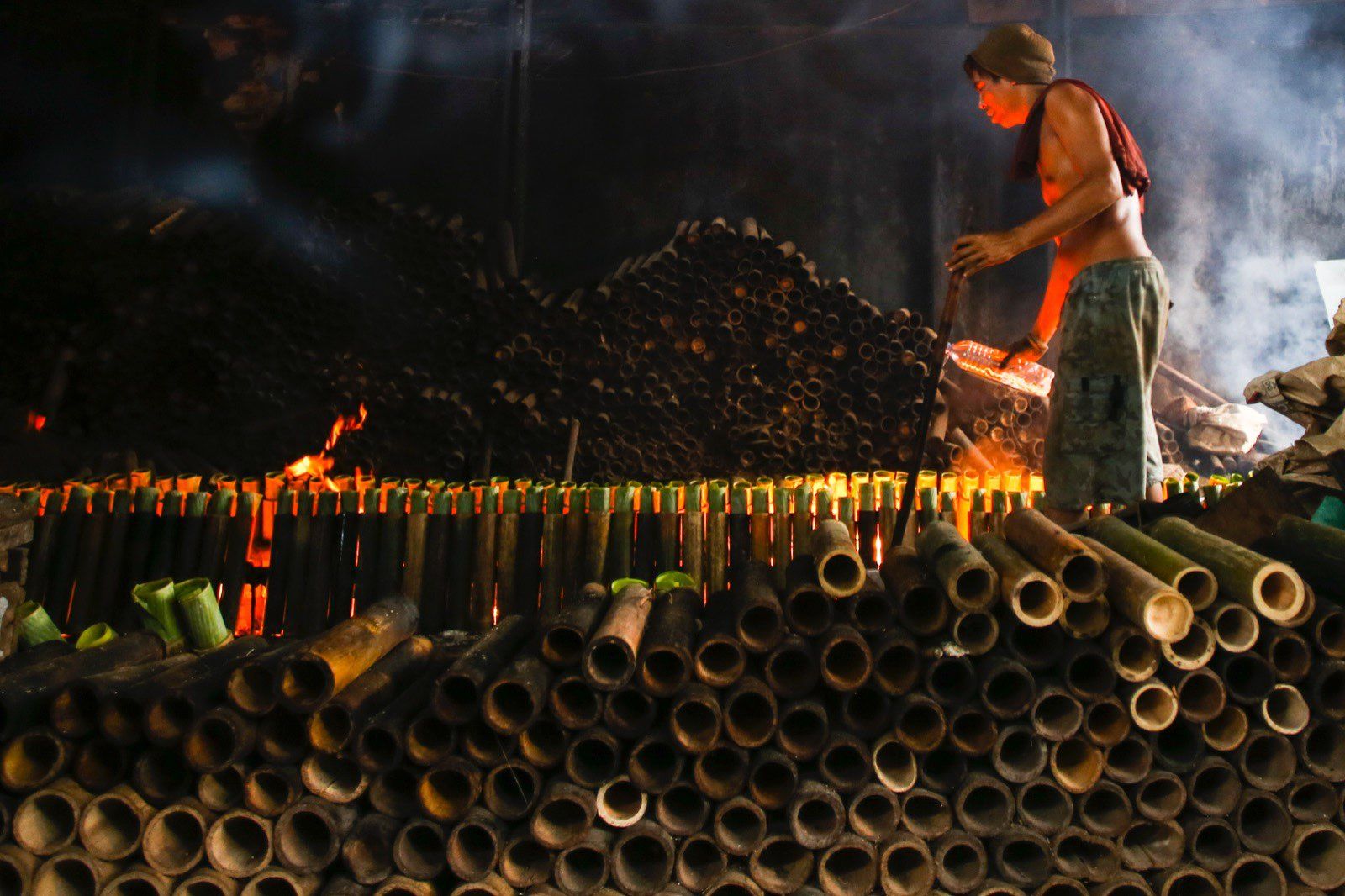

Welcome to a culinary world rich in diverse flavors! This time, we will explore one of the traditional foods that should not be missed from West Kalimantan, namely lemang. Who doesn’t know the fragrant aroma and delicious taste of lemang? Let’s find out more about the history, manufacturing process, and traditional values contained in this regional specialty dish. Let’s start our culinary adventure with lemang!
What is Lemang?
Lemang is a traditional food originating from West Kalimantan, Indonesia. This food is made from a mixture of sticky rice and coconut milk cooked in bamboo.
The process of making lemang is very unique and interesting. The bamboo is cut into small pieces then filled with a mixture of sticky rice and coconut milk, then baked over a fire until cooked.
The fragrant and delicious aroma of lemang often makes anyone unable to resist trying it. Lemang is usually served as a side dish during special occasions or certain celebrations.
When you eat lemang, feel the sensation of its soft and savory texture together. The combination of the sweet taste of coconut milk and sticky rice pule makes lemang so special in every bite.
So, for true culinary lovers or those who want to explore new tastes, don’t hesitate to try the delicious traditional West Kalimantan lemang!
History and Origins of Lemang
Lemang is a traditional food that has a long history in West Kalimantan. The origins of lemang can be traced to the days of the Hindu-Buddhist kingdoms in the archipelago. It is said that lemang was first made by farmers to fulfill their need for practical food while they worked in the fields.
The process of making lemang itself has gone through various stages and adjustments over time. In the past, lemang was cooked using bamboo as a container so that the texture and aroma when cooked were more delicious.
The traditional value of lemang lies not only in its delicious taste, but also in the process of making it which teaches about hard work, patience and togetherness. Lemang is often prepared together by families or communities when celebrating holidays or other important events.
With so many stories and meanings embedded in every lemang dish, it is not surprising that this food still exists and is loved by the people of West Kalimantan to this day.
Ingredients and Process for Making Lemang
Lemang is a popular traditional food in West Kalimantan. The manufacturing process involves simple ingredients but requires high skill and patience.
The main ingredients for making lemang consist of sticky rice, coconut milk, banana leaves and a pinch of salt. First of all, glutinous rice should be soaked in water for several hours to ensure proper moisture.
Then, after drying the sticky rice, mix it with coconut milk and salt until evenly distributed. Next, put this mixture into a bamboo stick that has been cleaned and covered with banana leaves.
The next process is to burn the lemang over hot coals slowly for several hours until it is perfectly cooked. Patience is the main key so that the lemang doesn’t burn or become undercooked in the middle.
With the fragrant aroma of coconut milk absorbed by the sticky rice, sheet after sheet of lemang will be ready to be enjoyed as a delicious and savory dish. Hopefully this article can provide new insight into the process of making Lemang!
Traditional and Cultural Values of Lemang
Lemang is not just a traditional West Kalimantan food, but also holds rich and deep cultural values. The process of making lemang which involves cooperation and togetherness between families or communities is a reflection of the spirit of mutual cooperation which is still highly upheld.
Apart from that, lemang is also often a symbol in various traditional ceremonies such as weddings, circumcisions, or Dayak tribal holidays. Its presence is not only a delicious dish, but also a sign of togetherness and gratitude for the good fortune provided.
By using bamboo as a container for making it, Lemang teaches us to maintain the use of natural materials and protect the surrounding environment. This reflects the philosophy of the Dayak people who live in harmony with nature and preserve their ancestral heritage in their every action.
Through the long process of making lemang, starting from the preparation of ingredients to the smoking process using firewood, the younger generation is invited to learn to appreciate the process and the hard work in maintaining traditional culinary heritage so that it remains sustainable amidst the current current of modernization.
Lemang Variations in West Kalimantan
West Kalimantan is known as a place where lemang is a very popular traditional food. In this area, there are various interesting variations of lemang tasted. One of them is Lemang Manis, where lemang is made with added sugar and coconut milk so it has a delicious sweet taste.
Apart from that, there is also Salted Lemang which has a savory taste because a little salt is added during the making process. Another variant is Lemang Durian, namely lemang served with pieces of fresh durian on top to give a unique sensation to the tongue.
Not only that, Lemang Ketan Hitam is also a favorite choice in West Kalimantan. The black sticky rice sheets used give the lemang a dark color and add to the distinctive aroma of the black sticky rice. With so many variations of lemang typical of West Kalimantan, each variant offers a different culinary experience for its connoisseurs.






